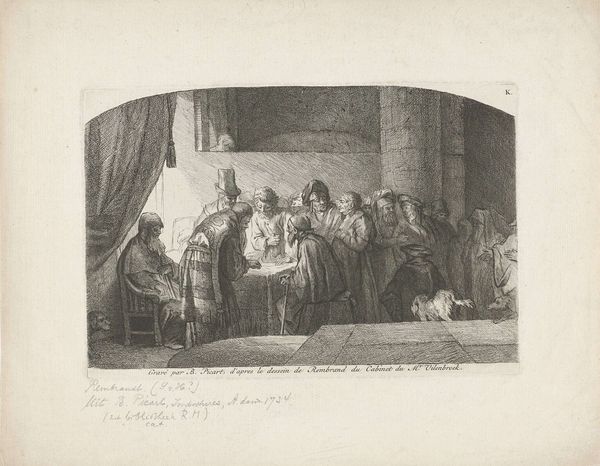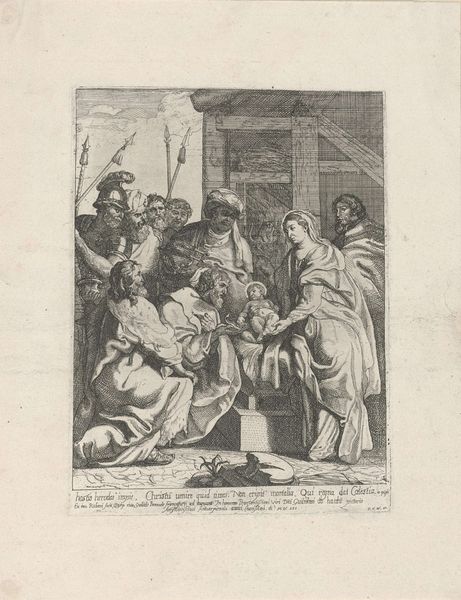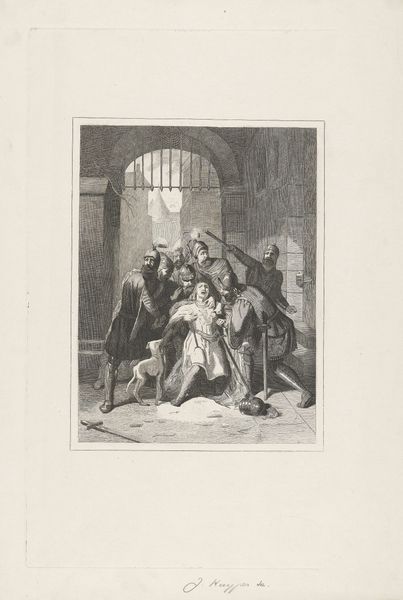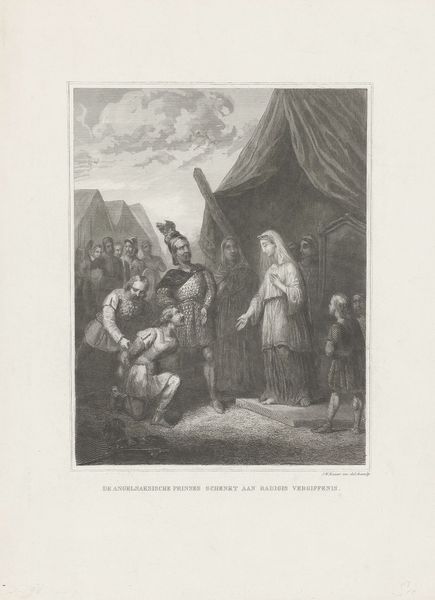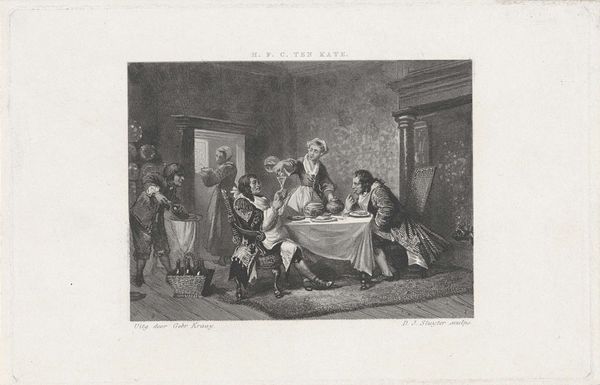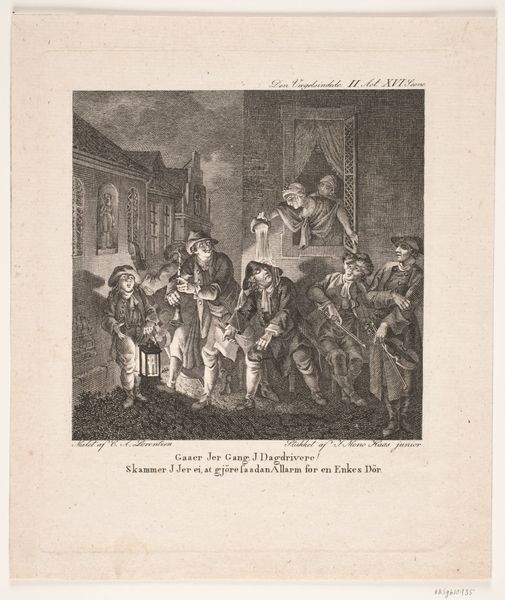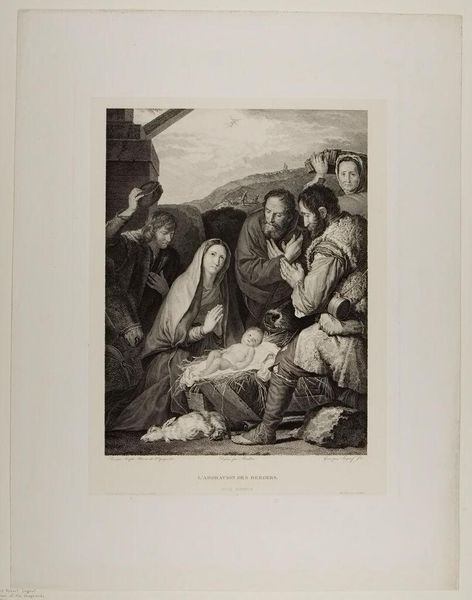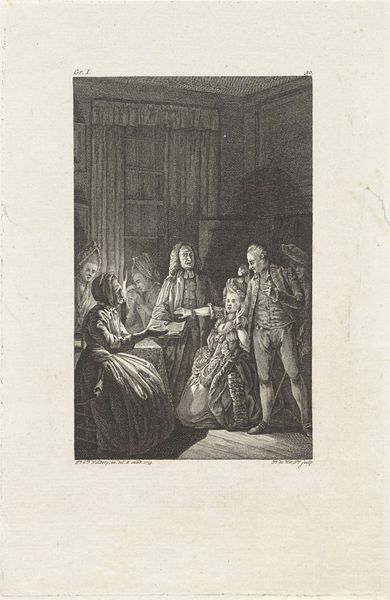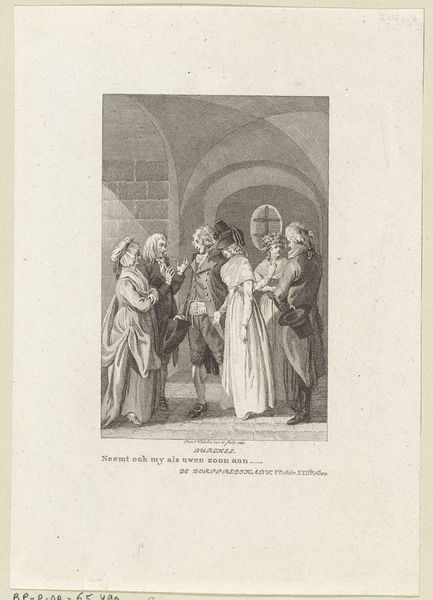
drawing, print, etching, ink, graphite, pen, engraving
#
portrait
#
pencil drawn
#
drawing
#
narrative-art
# print
#
etching
#
charcoal drawing
#
figuration
#
ink
#
pencil drawing
#
romanticism
#
graphite
#
pen
#
graphite
#
engraving
Dimensions: height 221 mm, width 171 mm
Copyright: Rijks Museum: Open Domain
Curator: Here we have "Aanbidding door de herders," or "Adoration of the Shepherds," an etching by Johannes de Mare, dating sometime between 1816 and 1852. Editor: My initial impression is one of quiet solemnity. The subdued greyscale palette emphasizes the somber mood. It has a theatrical, staged quality about it, despite the humble setting. Curator: Indeed. The monochrome tonality carries significant symbolic weight. Think of how often light is employed to convey divine presence in similar depictions. By muting the colors, perhaps De Mare wanted to shift the focus to the figures themselves, their devotion and reverence. Consider, too, the universality it suggests. Editor: I'm struck by the fine lines achieved through the etching process, it almost gives the impression of a graphite drawing. It is skillfully executed. And let's not forget that prints like this were relatively accessible. Its widespread circulation must have had an impact. Curator: Absolutely. Printmaking allowed for the democratization of religious imagery. The scene, presented with such a clear narrative, resonated with many regardless of social standing. Notice the figures clustered around the infant, bathed in a soft light—archetypes of humility and faith. Editor: The materiality is key. Engraving, etching – these aren't spontaneous gestures like painting. There's labor involved, reproduction. These were not unique art objects, yet, ironically, each print is a testament to artistic skill meeting a consumer need. How were such prints priced, purchased? This tells us about 19th-century art markets. Curator: An excellent point. The labor transforms something that might be considered mere reproduction into an object imbued with its own intrinsic value. Also note how the architectural backdrop of a humble stable transitions to a tempestuous and infinite night sky – this emphasizes the emotional experience of witnessing this holy birth. Editor: I find myself pondering the role of the artist within this production process. How much creative freedom did de Mare have? Was it based on previous compositions or a more individualized reinterpretation? These material considerations ultimately lead us to the bigger economic pictures of art production and circulation. Curator: The careful details embedded in the narrative truly carry cultural significance. Editor: Yes, and tracing the history of printmaking gives crucial insight into art consumption, and into the making of meaning across wider society.
Comments
No comments
Be the first to comment and join the conversation on the ultimate creative platform.
